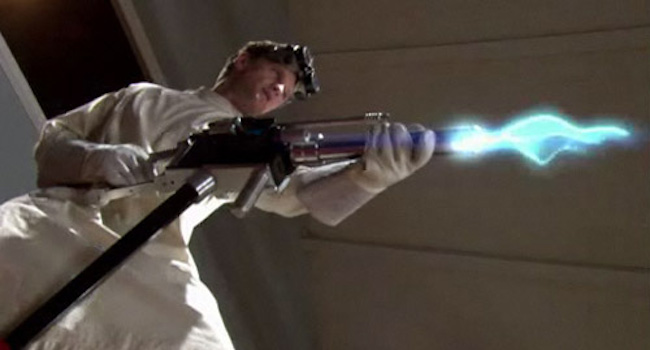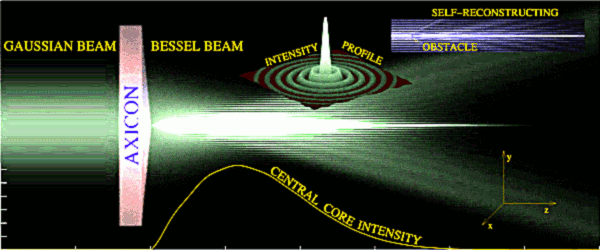South Africa’s creators, coders and founders are under pressure to do more with less. Whether you’re running a meme page from Mitchells Plain, debugging…
10 sci-fi gadgets coming sooner than you think

Ever dreamed of experiencing the technology seen in movies or read in books? Over the years the sci-fi realm has teased us with the prospects of lightsaber battles, galactic exploration, time travel, space whales and so much more. With these advances in science and technology, have you ever wondered how close we are to realising any of these “fictional” gadgets and inventions? You’ll be surprised just how close we are to enjoying the sci-fi fruits of the future.
Force field
A thousand missiles, 300 bullets and a samurai sword (just for good measure) are heading in your direction. All at once. What do you do? Easy, just pop up your force field and laugh at the fools who thought they were able to land a scratch on you. Though this seems like an unlikely scenario, life has taught us not to underestimate the manifestation of the improbable.
Freeze ray
An ice-cold blast envelopes your body and within seconds, you’re incapacitated by a layer of ice covering your body. That’s right. You’re the victim of the notorious freeze ray, a weapon often adopted by the villains of the world. Arguably, we can be lucky that such a piece of equipment has not yet made its début. But don’t get too comfortable as scientists are extremely close to turning this fictional weapon into a reality. It was discovered that if a laser’s photons are tuned to the right frequency, they will absorb atoms that are travelling in the opposite directions.

This drastically slows down the motion of these atoms, effectively cooling them down, as heat is generated by the speed at which atoms are moving. The project is still very much in its testing phases and is far from being able to instantly freeze an object (or human being). But I am confident that someday we will have a world overrun with freeze ray -wielding villains. Here’s to hoping.
Lightsaber
The preferred weapon of the Jedi Knight, the lightsaber, is a devastating weapon that will strike fear into the hearts of those who wish to challenge you. Funnily enough, its possible creation was discovered completely by accident. It was thought that photons did not react with one another, but simply just pass on by. But scientists recently discovered that when two lasers are fired next to each other in an ultra-cool chamber, the photons would combine and produce a new form of matter called a “photonic molecule”.
Jetpack

Imagine it: empty space all around you, freedom in all directions, the wind rushing over you as you fly across the vast oceans and landscapes of the world. Man has been dreaming of flight ever since we laid eyes on the tranquil movements of a bird. Although we have achieved the dream of flight it is the majesty of flying we crave. In essence, to become Superman. Amazingly, this dream is so close to reality we can taste it. Jetpacks have made an appearance as far back as the 1940s. But the results haven’t been too promising and over the years there hasn’t been much progress.
Today there are quite a few companies selling jetpacks to the public. Though, it is important to note, that these machines are extremely expensive (from US$125 000 to US$250 000). The most promising of these is the Martin Jetpack. Where most of these jetpacks can only muster a flight time of thirty seconds to nine minutes, the Martin Jetpack is capable of flying for 30 minutes, with an altitude of 800 feet and a speed of 74 km/h. This amazing machine is not yet available to the public and won’t be for the next few years.
Teleportation
Teleportation has been one of humankind’s greatest dreams. Be it for an extra hour of sleep before work or to travel across the world in an instant, such a device would change humankind forever. So how close are we to actually being able to teleport ourselves? Scientists say we are much closer than we think. But the more they discover, the more impossible it seems. To teleport a person you would need to be able to dematerialise them at point A, transfer this “data” to point B and then make them materialise again. It is a simple concept with a complicated objective. One of the first obstacles to overcome is the Heisenberg Uncertainty Principle, which states that one can’t measure both the speed and position of a particle. This means that if you could calculate the speed of the particle you could not know its position because the act of observing the particle actually changes its nature.
In 1993, physicist Charles Bennet, established that it was possible to teleport matter at a quantum level. By 1998, this research resulted in a European group being able to teleport a photon over a distance of roughly one meter. But it is important to note that the photon had to be “destroyed” at one point and then “replicated” at another point, meaning that the original photon no longer existed. I’m sure you can see how this would infuriate numerous human/animal rights groups if such an experiment would ever take place on a living being.
Invisibility cloak
Who hasn’t ever wanted to escape an embarrassing situation? Or sneak into a “restricted area”? You potentially could, because invisibility cloaks exist. They might not be in the class of Harry Potter but they are a step towards the quintessential stalker’s dream. There are presently two types of invisibility cloaks: active and passive.
Passive cloaks can only shield an object from a very limited frequency range and certain direction. Active cloaks wrap an object with a much larger frequency range which doesn’t fall under the visible light spectrum (range of light frequencies seen by the human eye). Currently, an explored application is to shield soldiers from detection of devices using these specific light frequencies. One other option worth mentioning is the “optical camouflaging t-shirts”. These t-shirts film the scene from behind and project it on the front which is more illusion than invisibility. But it does give me hope that I will one day truly know what lies beyond the boundaries of Area 51.
Neuralyzer
It is one of the Men in Black’s most trusty weapons, a device that has the power to erase a memory and replace it with a new one. We can all certainly think of few occasions where this might come in handy. The truth is that “neuralyzation” is already a truth. It just doesn’t come in the form of a fancy little flashing device but rather in the form of an experimental drug. The SUNY Downstate medical centre has performed numerous tests on rats and has been able to erase memories as old as three months. The drug manipulates a specific enzyme molecule responsible for preserving memory.

Importantly, this drug doesn’t damage this part of the brain, meaning that the ability to obtain new memories remains wholly intact. Presently the drug hasn’t moved out of the animal testing phase but is a promising solution to erasing memory that could be the key to curing conditions such as post-traumatic stress disorder. This is a step in the right direction but it seems our dreams of owning the MIB issued “neuralyzer” is still far from a reality.
Cyborg
Whenever you hear the word “cyborg” you immediately associate it with an emotionless and malevolent human/robot hybrid. Although we have been conditioned to believe so through movies and such, in reality “cyborg” technology has a very positive place in our world. With a plethora of illnesses and accidents robbing us of our limbs, this technology has the power to not only repair us to our original self, but to even enhance. Presently, there are multiple examples of people who are already part machine. Neil Harbisson was born with a condition known as achromatopsia (extreme colour-blindness) and could only see in black and white.
Now, with an implanted electronic eye, he is able to see colours beyond that of a normal human being. Former electrician, Jesse Sullivan, accidentally touched a 7000 volt active cable resulting in both his arms being amputated. Now he has become one of the world’s first true cyborgs with a bionic arm that is connected to his nervous system, meaning he can effectively control it with his mind, even feeling physical sensations such as hot and cold temperatures. Cyborgs technology is the closest entry on this list to being a reality and one I feel will have the greatest impact for the human race.
Tractor beam
No sci-fi related list is complete without mentioning the well-known tractor beam. It’s featured in almost every science fiction book, movie or game you can think of and is one technology geeks have been waiting for since E.E. Smith’s book, Skylark of Space, although he called it an “attractor beam” and then later coined the term “tractor beam” in his book Spacehounds of IPC. The latest and closest thing we have to a full-fledged tractor beam is a project that scientists from New York University are currently working on that uses Bessel beams.

Time travel
Who hasn’t ever considered the notion of time travelling? Imagine going back into the past and experiencing things we can now only read of in history books. Or visiting the future and seeing what will one day become of our world. It is a concept that has teased our human minds since, well, the existence of time. Presently scientists claim that, in theory, it is completely plausible to travel to the future but impossible to travel back into the past. Thanks to Albert Einstein, we have learned that time, in a sense, is an illusion. Time is relative to speed and gravity. If you are standing on top of a building, time moves faster than it does on the ground because of the weaker gravity. If one person is moving faster than another then time slows down for the one moving faster. So this means that we have all time travelled into the future, even though it is only a billionth of a second. If you wish to travel forward in time a bit faster you will need to go into space. Because of space’s lack of gravity time moves quicker.

Images via SickAndPretty (Freeze Ray), ISIBrno (Bessel Ray)


